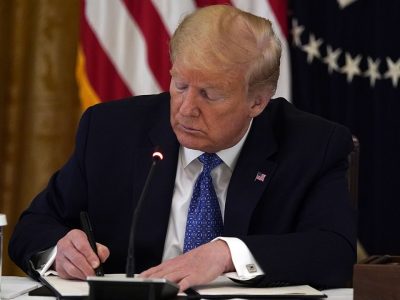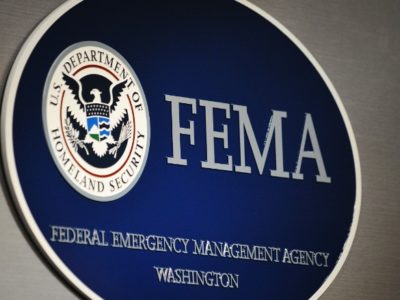Revoking Monuments?
Recent Justice Department memo on National Monuments argues for Presidential power to eliminate them entirely
National monuments were a major flashpoint for public lands management under the first Trump Administration, which dramatically shrank two national monuments in Utah. I think there was a broad expectation that the second Trump Administration would do the same, but for more monuments (including those designated under the Biden Administration), but so far not much has happened. One possibility is that the Trump Administration is hoping that litigation challenging the Antiquities Act (which is the basis for designating national monuments) as unconstitutional will succeed, which would not only allow the Administration to eliminate existing monuments, but also prevent future Administrations from designating any more monuments. (It’s also true that in the first term, the monument reductions didn’t happen until December 2017, but things have moved much faster in this second term on other matters….)
However, this summer the Administration has put out a new opinion from the Department of Justice’s Office of Legal Counsel overruling a 1938 opinion that held that Presidents did not have the power to revoke national monuments. This opinion is probably a nice prelude to the reasoning the Administration would give if it did revoke or shrink national monuments, so I think a critical review of its reasoning is helpful.
The basic thrust of the opinion is that (1) there is substantial historical practice by which Presidents have shrunk national monuments in the past; (2) in doing so, Presidents have de-deisgnated the “historic landmarks, historic and prehistoric structures, and other objects of historic or scientific interest” that are the basis of a national monument designation; and (3) thus, the President has the power to de-designate all such landmarks, structures, or objects and eliminate a national monument. There are some (half-hearted) efforts to ground the legal arguments around the recodification of the statutes on national parks and monuments in 2014, claiming that recodification supports the reasoning in the opinion. The opinion also relies fairly heavily on arguments (developed in prior scholarship) that Presidents have the inherent authority to undo actions that they have discretion to undertake, unless explicitly prohibited by Congress (and there is no such prohibition in the Antiquities Act).
The opinion is correct about the historical practice of shrinking of monuments, though none of the examples (other than President Trump’s actions in 2017) occurred after 1960. It seeks to leverage these examples into a broad power to eliminate monuments.
But there is more to the history. None of the historical examples of shrinking national monuments (again other than President Trump’s) occurred after the 1976 enactment by Congress of the Federal Land Policy and Management Act (FLPMA), a law that was generally understood as a Congressional effort to take back power over public land management from the Executive. And as I and co-authors noted in prior work, there is legislative history indicating that Congress sought in FLPMA to constrain Presidential revocation power for national monuments. Thus, there is a case to be made that the redefinition of executive and legislative power in FLPMA included overruling any Presidential power to shrink national monuments that might have existed before. The opinion is dismissive of this legislative history on the grounds that legislative history is not that important – yet elsewhere, the opinion heavily relies on legislative history.
There are other problems with the opinion’s reasoning. Public lands legislation contemporary with the Antiquities Act, such as the Pickett Act, explicitly granted the President the power to create and revoke “withdrawals” of public lands (basically actions protecting public lands from sale or transfer and thus potential development). The contrast with the Antiquities Act, which does not have such language, is striking. (Here is where the opinion relies heavily on legislative history to argue this difference does not matter.)
Finally, when it comes to general principles of executive power, which the opinion relies substantially on, it never really grapples with the fact that the Antiquities Act is based on Congress’ Property Clause powers, which are in Article IV, not Article I. As I’ve argued before, Congress has much broader power under Article IV than Article I, including vis-à-vis the President –in particular, we should read Presidential power in implementing statutes enacted pursuant to the Property Clause narrowly, in order to preserve Congressional prerogatives to retain federal ownership and control over public lands. This is consistent with historical practice in the 19th Century, in which there was broad executive power to act to protect public lands from disposal, but not the broad executive power to sell or give public lands away. (The opinion discusses historical practice and caselaw to some extent, but its coverage is incomplete.) As I’ve argued, such an understanding of the Property Clause means that the default should not be that Presidents always have the power to undo what they have done – but instead, that Presidential actions to protect public lands are irreversible unless Congress explicitly authorizes Presidential power to undo protections.
At this point, we remain in a waiting game, seeing what the next steps from the Administration will be.







CLEE published an extensive monograph on this subject as part of our review of Project 2025. The paper is authored by James Moose and his colleague and is available here: https://www.law.berkeley.edu/wp-content/uploads/2025/02/Monograph_Paper3_CLEE_Feb2025.pdf
The paper concludes that the President does not have the power to shrink established monuments.